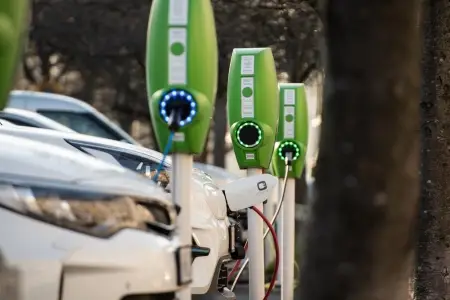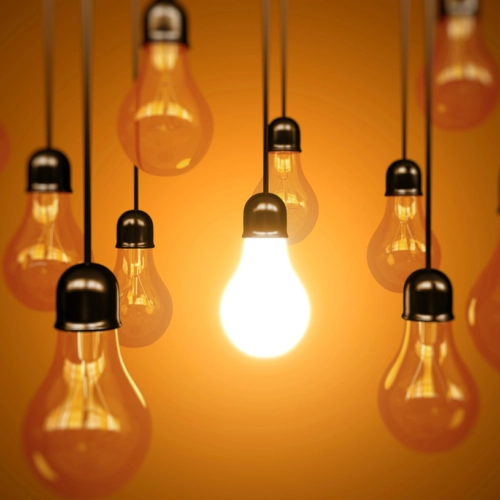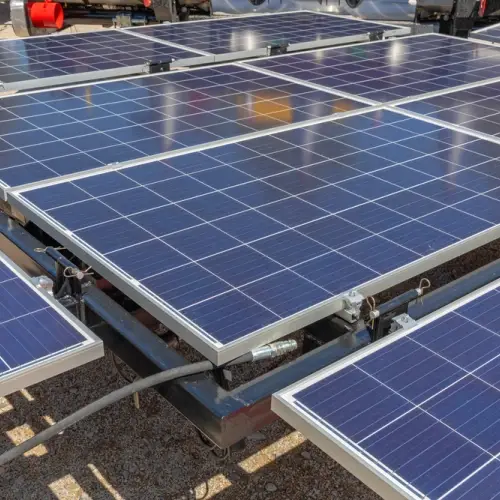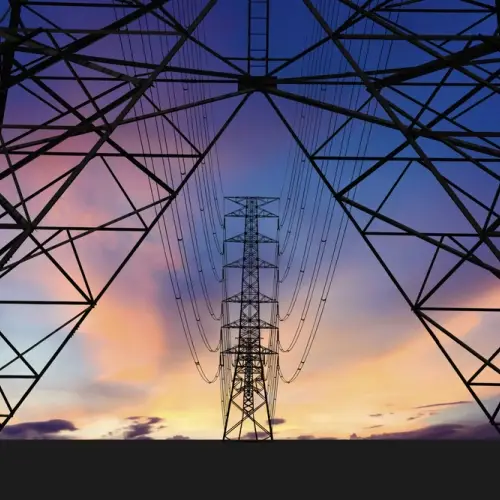
Dynamic electricity is the branch of electricity that studies the movement of electric charges through a conductor, which we commonly know as electric current. Unlike static electricity, where the charges do not move, in dynamic electricity, the charges are in constant motion, generating a current that can be used to operate all kinds of devices.
Let's explore this topic through 10 everyday examples that show how dynamic electricity works in our lives.
1. A mobile phone charging
One of the most common examples of dynamic electricity is seen when we charge our mobile phones. When we connect the charging cable to the household power supply and to the device, electrical charges begin to move through the cable. The charger converts the alternating current coming out of the socket into direct current, which is what the phone needs to charge its battery.
Dynamic current flows from the plug to the phone through the cable, and as the electrical charges move, they transfer energy to the device, storing it as chemical energy in the battery. Without this movement of charges, the phone would not be able to charge.
2. Turn on a light bulb
 Another classic example is when we turn on a conventional incandescent light bulb.
Another classic example is when we turn on a conventional incandescent light bulb.
When you press the switch, you close an electrical circuit that allows electrons to flow from the power source (which can be the home power grid) to the light bulb. The electric current that flows through the filament of the bulb generates heat due to the resistance of the material, causing the filament to become so hot that it emits light.
In this case, we are converting electrical energy into light and thermal energy, all thanks to the movement of electrical charges.
There are many other types of light bulbs, such as LED bulbs, that work in different ways. However, they all require an electric current and are good examples of dynamic electricity.
3. A fan running
The fan is another great example of dynamic electricity. When we turn it on, electric current flows from the plug, through the cord, and into the fan's motor. The motor converts the electrical energy into mechanical energy, which causes the fan's blades to spin.
The process is simple: electrical charges move through the motor, causing an electromagnet inside to rotate. This movement generates a magnetic field that pushes the fan blades, thus generating the wind that cools the room. All of this happens thanks to dynamic electricity.
4. An electric car in motion
 Electric cars are an excellent example of dynamic electricity applied to mobility. Instead of relying on a combustion engine, these vehicles use batteries to store electrical energy. When the driver accelerates, the battery converts the chemical energy stored in its cells and releases electricity, which flows to an electric motor.
Electric cars are an excellent example of dynamic electricity applied to mobility. Instead of relying on a combustion engine, these vehicles use batteries to store electrical energy. When the driver accelerates, the battery converts the chemical energy stored in its cells and releases electricity, which flows to an electric motor.
This motor converts electric current into mechanical energy, which drives the car's wheels. In this case, dynamic electricity is the key to the vehicle's operation, which also converts the chemical energy stored in the battery into motion.
Using electric chargers to charge batteries is also an example of dynamic electricity. In this case, electrical energy is used to convert it into chemical energy that can be stored in batteries.
5. A high-speed train (electric train)
These trains operate through a system of electric current that flows through overhead wires or through a third rail. The electric current is transferred to the train, where it powers electric motors that convert that energy into movement.
An interesting aspect of these trains is that, thanks to dynamic electricity, they are able to reach very high speeds with surprising energy efficiency. The continuous movement of electrons along these transmission systems is what allows the train to operate.
6. Photovoltaic solar panels
 Solar energy is one of the clearest examples of how we can harness dynamic electricity using renewable energy sources. Solar panels are made of photovoltaic cells, which convert sunlight into electricity thanks to the photovoltaic effect, where photons from sunlight hit electrons in the panel material, giving them enough energy to move and generate an electric current.
Solar energy is one of the clearest examples of how we can harness dynamic electricity using renewable energy sources. Solar panels are made of photovoltaic cells, which convert sunlight into electricity thanks to the photovoltaic effect, where photons from sunlight hit electrons in the panel material, giving them enough energy to move and generate an electric current.
This electricity generated by solar panels is direct current (DC). In domestic installations, this current passes through an inverter that converts it into alternating current (AC), which is the type of electricity we use in our homes.
In addition, in larger installations such as solar farms, the electricity generated by thousands of solar panels is concentrated and sent to the power grid, from where it can be distributed to homes and businesses via high-voltage power lines. Solar energy can thus be harnessed on a large scale thanks to dynamic electricity.
10. High voltage power lines
 These enormous structures allow electricity generated in power plants (such as hydroelectric, nuclear, thermal, or solar plants) to be transported over long distances, until it reaches the final consumers.
These enormous structures allow electricity generated in power plants (such as hydroelectric, nuclear, thermal, or solar plants) to be transported over long distances, until it reaches the final consumers.
The current that flows through high voltage towers is alternating current (AC) and has a very important characteristic: it is transported at a high voltage to reduce energy losses along the way. This means that electrical charges move through these wires with a large potential difference (voltage) between the ends, allowing electricity to travel hundreds or thousands of kilometres without losing too much energy.
Once electricity reaches cities or industrial areas, its voltage is reduced through transformers, making it safe to use in homes and businesses.
Thus, high voltage towers and transformers are part of a massive electricity transmission system that relies on dynamic electricity, allowing energy generated at a far-away plant to power our everyday devices.
7. A laptop in use
When you turn on a laptop, you are making use of dynamic electricity in several ways. Electric current flows from the battery or charger to different components of the laptop, such as the processor, RAM, display, and storage devices.
In each of these components, dynamic electricity powers electronic circuits, allowing the computer to perform calculations, process data, display images on the screen, and perform many other tasks we take for granted.
8. A drone flying
The operation of drones also relies heavily on dynamic electricity. These devices have electric motors that are powered by batteries. Electricity flows from the batteries to the motors, causing the propellers to spin.
As with other electric motors, moving charges generate a magnetic field that causes the propellers to spin. Thanks to this continuous movement of charges, the drone can rise into the air and move in different directions. Dynamic electricity is responsible for keeping the entire system running.
10. A remote-controlled toy car
Just like electric cars, remote-controlled toy cars are powered by dynamic electricity. When you turn on the remote control and start the car, electric current flows from the batteries to the motor that drives the wheels.
This small electric motor converts electricity into motion, allowing the toy car to move forward, backward and turn. Although it is a toy, it uses the same basic principle of dynamic electricity as real vehicles.
11. An electric heating system
In electric heating systems, dynamic electricity is converted into heat. When we turn on an electric stove or radiator, electric current flows through resistors, which heat up due to the passage of electrons.
This heat generated by the resistance is dissipated into the environment, warming the room. Here, dynamic electricity is transformed into thermal energy, and although we do not see the movement of the electrons, the heat we feel is proof that current is flowing.
12. A washing machine in operation
When we use a washing machine, dynamic electricity plays a fundamental role. When we turn on the appliance, electric current flows through its internal circuit and reaches an electric motor that rotates the drum containing the clothes.
As in the other examples, electricity is converted into mechanical motion. In this case, the electric current is transformed into the energy needed to rotate the drum, while other elements, such as the water pump, also depend on dynamic electricity to perform their functions.